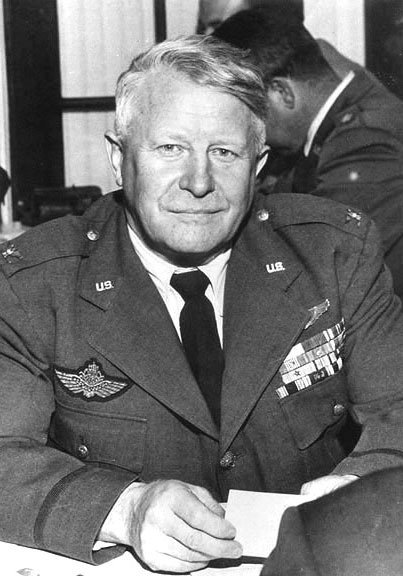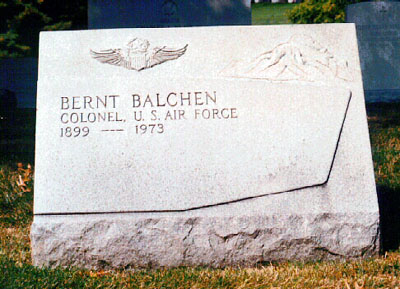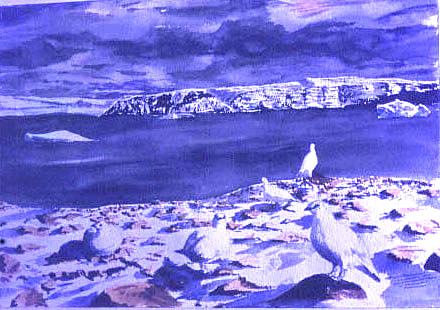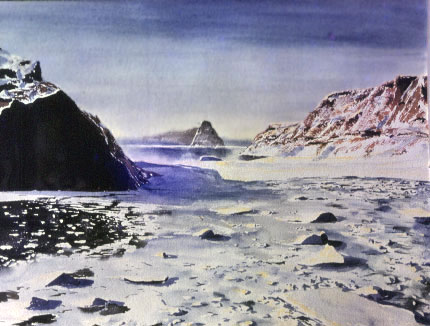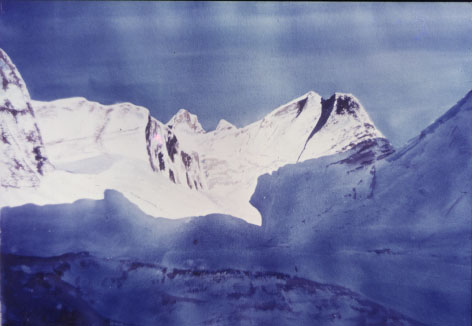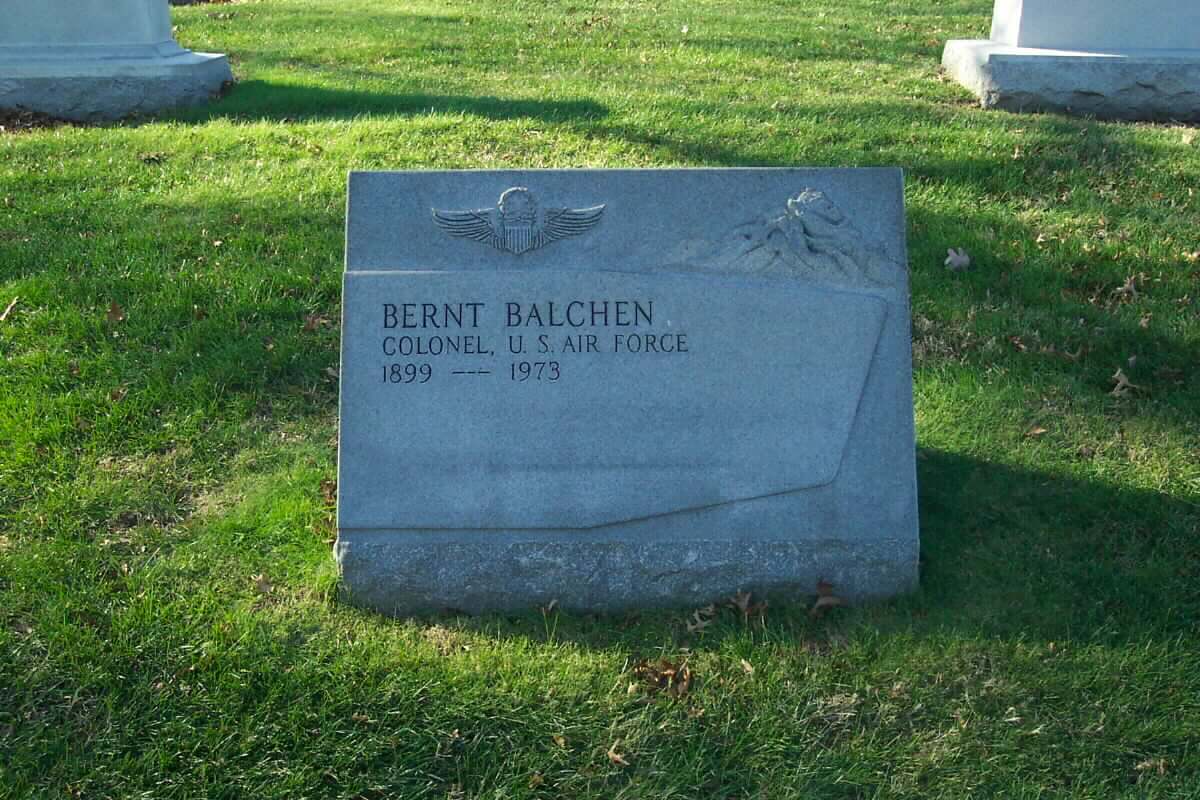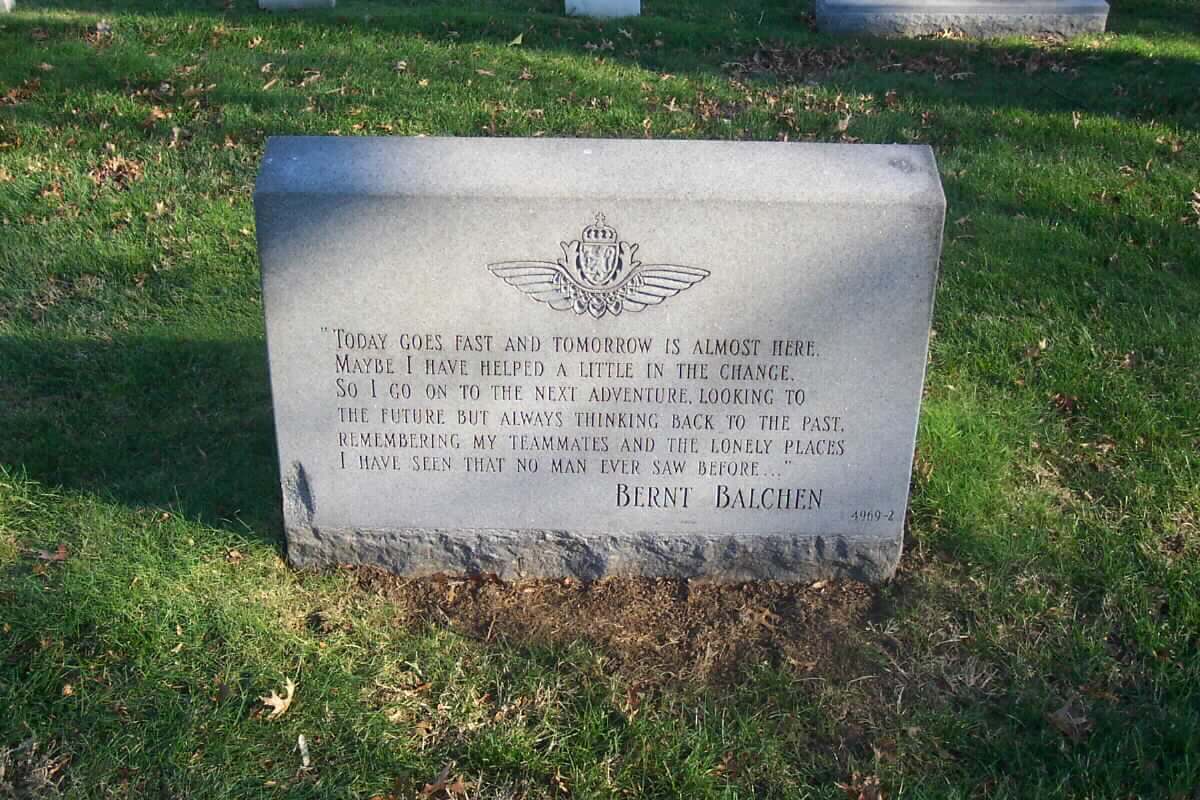Famous as the first man to pilot a plane over the South Pole, he served with the British following the German conquest of his native Norway until September 1941, and then entered US Army Air Forces.
For a time he commanded an airfield in Greenland and engaged in polar rescue operations and with most important work in connection with Norwegian underground. He helped to set up an escape route between United Kingdom and Sweden that enabled some 5,000 Norwegians and other people to flee Nazi tyranny. He was also responsible for supplying the underground in Scandinavia. From November 1944 to August 1945, he commanded air operations that chased the Germans from Norway and Finland.
He was earlier the chief pilot for Admiral Richard E. Byrd’s first flight over the South Pole in 1929. Born on October 23, 1899, he died at Mount Kisko, New York on October 18, 1973 and was buried with full military honors in Section 2 of Arlington National Cemetery.
“Today goes fast and tomorrow is almost here. Maybe I have helped a little in the change. So I go on to the next adventure looking to the future but always remembering my teammates and the lonely places I have seen that no man ever saw before.”
106th CONGRESS
1st Session
H. CON. RES. 203
Recognizing the late Bernt Balchen for his many contributions to the United States and a lifetime of remarkable achievements on the centenary of his birth, October 23, 1999.
IN THE HOUSE OF REPRESENTATIVES
October 21, 1999
Mr. SABO submitted the following concurrent resolution; which was referred to the Committee on Government Reform
CONCURRENT RESOLUTION
Recognizing the late Bernt Balchen for his many contributions to the United States and a lifetime of remarkable achievements on the centenary of his birth, October 23, 1999.
Whereas Bernt Balchen, as co-pilot and navigator with Floyd Bennett and under the sponsorship of Joseph Wanamaker, flew the Ford trimotor monoplane `Josephine Ford’ on a flying tour to more than 50 American cities in 1926, thereby promoting commercial aviation as a safe, reliable, and practical means of transport;
Whereas in 1927 Bernt Balchen, piloting the first flight to carry United States mail over the Atlantic Ocean, flew the aircraft `America’ to France under weather conditions so adverse that he was forced to set the aircraft down in the surf off Normandy at night, a maneuver that he executed so skillfully that he saved all on board the aircraft;
Whereas on November 29, 1929, Bernt Balchen, while participating in the first expedition of Admiral Richard Evelyn Byrd to Antarctica, became the first pilot to fly a plane over the South Pole;
Whereas Bernt Balchen was indispensable to the success of various American expeditions in Antarctica under the leadership of Admiral Byrd and Lincoln Ellsworth;
Whereas Bernt Balchen, under secret conditions and in record time, was responsible for building in Greenland in the autumn of 1941 the air base Sondre Stromfjord, then known as `Bluie West Eight’, that was used for ferrying warplanes to Europe;
Whereas Bernt Balchen, as commander of `Bluie West Eight’ between September 1941 and November 1943, provided his personnel with training in cold weather survival skills and rescue techniques which enabled them to carry out many spectacular rescues of downed airmen on the Greenland icecap;
Whereas Bernt Balchen, on May 7, 1943, successfully led a bombing raid that destroyed the sole German post in Greenland, a weather station and antiaircraft battery on the east coast of Greenland, thereby hindering the ability of the German armed forces to predict weather patterns in the North Atlantic and Europe;
Whereas Bernt Balchen, between March and December 1944, commanded an air transport operation that safely evacuated from Sweden at least 2,000 Norwegians, 900 American internees, and 150 internees of other nationalities and transported strategic freight and numerous important diplomats and Armed Forces officers;
Whereas Bernt Balchen, between July and October 1944, commanded a clandestine air transport operation that transported 64 tons of operational supplies from Scotland to occupied Norway in defiance of severe enemy opposition;
Whereas Bernt Balchen, between November 1944 and April 1945, commanded a clandestine air transport operation that, again in defiance of severe enemy opposition, transported from England to Sweden 200 tons of arctic equipment and operational supplies that were used to make clandestine overland transport from Sweden to Norway possible;
Whereas Bernt Balchen, during the winter of 1945, made C-47 aircraft under his command available to transport into northernNorway the communications facilities that thereafter transmitted from Norway intelligence of inestimable value to the Allied Expeditionary Force;
Whereas Bernt Balchen, as one of the founders of the Scandinavian Airlines System, pioneered commercial airline flight over the North Pole, which increased business development in Alaska and shortened the flying time necessary for international flights between the United States and points in Europe and Asia;
Whereas Bernt Balchen, from November 1948 to January 1951, commanded the 10th Rescue Squadron of the United States Air Force, which was headquartered in Alaska but ranged across the entire northern tier of North America rescuing downed airmen,
and led the squadron in the development of the techniques that are now universally used in cold weather search and rescue operations;
Whereas Bernt Balchen was the individual primarily responsible for the pioneering and development of the strategic air base at Thule, Greenland, which was built secretly in 1951 under severe weather conditions and which, by extending the range of the Strategic Air Command, increased the capabilities that made the Strategic Air Command a significant deterrent to Soviet aggression during the Cold War;
Whereas Bernt Balchen, as Assistant for Arctic Activities in the Directorate of Operations of the United States Air Force, rendered expert advice on the development of concepts, procedures, and programs pertaining to the Arctic that have been consistently utilized by other agencies in planning Arctic projects and operations of national and international interest;
Whereas Bernt Balchen served brilliantly as an officer in the United States Air Force and contributed immeasurably to the mission of the Air Force and the security of the United States;
Whereas the International Aviation Snow Symposium, of which Bernt Balchen was a founder and honorary chairman, established in 1976 the Balchen Award that is presented annually to recognize excellence in the performance of airport snow and ice removal, is sought avidly by the managers of airports of all categories in the United States and Canada, and has successfully encouraged progressive improvement in cold weather airport safety and air travel;
Whereas the United States Government has awarded Bernt Balchen the Byrd Antarctic Expedition Congressional Medal, the Distinguished Service Medal, the Distinguished Flying Cross, the Legion of Merit, the Soldier’s Medal, and the Air Medal, and other governments and societies have awarded Bernt Balchen various other medals and awards in recognition of his patriotism and remarkable achievement in aviation;
Whereas Bernt Balchen, a native of Norway who became a citizen of the United States on November 5, 1931, before a Federal judge in Hackensack, New Jersey, and entered the military service of the United States in the United States Army Air Corps on September 5, 1941, at all times furthered the cordial relationship between the United States of America and the Kingdom of Norway, one of America’s most-cherished allies;
Whereas Bernt Balchen was buried with full military honors at Arlington National Cemetery on October 23, 1973; and
Whereas October 23, 1999, is the 100th anniversary of the birth of Bernt Balchen and is being observed as such in many commemorative events taking place in the United States and Norway: Now, therefore, be it Resolved by the House of Representatives (the Senate concurring), That the late Bernt Balchen is hereby recognized for his extraordinary service to the United States, including the national security.
SEC. 2. The Clerk of the House of Representatives shall transmit an enrolled copy of this concurrent resolution to the family of Bernt Balchen.
Courtesy of Bess Balchen:
Bernt Balchen, who was born in Norway, was a reserve pilot/engineer on the 1926 Amundsen/Ellsworth/Nobile Norge expedition in Spitsbergen when Commander Richard E. Byrd attempted to fly to the North Pole and return in the Josephine Ford.
Byrd invited Balchen to come to the US with him; he became a pilot on Byrd’s 1927 transatlantic flight and chief pilot on Byrd’s flight to the South Pole in 1929.
During World War II, as commanding officer of Task Force 8, Bernt Balchen established the air base Bluie West 8 on the southwest coast of Greenland. During his two-year tour of duty he performed some spectacular rescue missions on the Greenland icecap.
In 1943, now a colonel, he was assigned to the 8th Air Force and operated into Sweden and Norway, among other tasks dropping supplies and weapons to the Norwegian “underground” and evacuating allied personnel from Sweden to England.
While commanding officer of the 10th Rescue Squadron in Alaska, he flew a C-54 from Fairbanks over the North Pole to Oslo, thereby becoming the first to pilot a plane over both poles.
An accomplished watercolorist, he had three one-man shows at the Grand Central Art Galleries in New York City.
He died in October, 1973.
On October 23, 1999, the centennial of Balchen’s birth, King Harald V of Norway unveiled in Kristiansand a statue of him.
Bess Balchen was correspondent in the US for a Norwegian daily after World War II, a writer of short-shorts and articles, author of a cookbook (with Bernt Balchen) and a children’s book. During her marriage to Bernt Balchen she assisted him with his correspondence and lectures etc. and kept a day to day diary. Later she became managing editor of the AIA Journal (The American Institute of Architects) and editor of Transportation Engineering. She is now retired and lives in Maine.
Paintings By Brent Balchen
Bernt Balchen started to sketch when he was a youngster. He’d draw birds, trees, horses, lumberjacks and
everything else that surrounded him in the Southern part of his native Norway. But it was only in the late 1940’s,
when he served with the US Air Force in Alaska, that he took up the art of water coloring in earnest.
watercolor by Bernt Balchen
Michael Robert Patterson was born in Arlington and is the son of a former officer of the US Army. So it was no wonder that sooner or later his interests drew him to American history and especially to American military history. Many of his articles can be found on renowned portals like the New York Times, Washingtonpost or Wikipedia.
Reviewed by: Michael Howard

